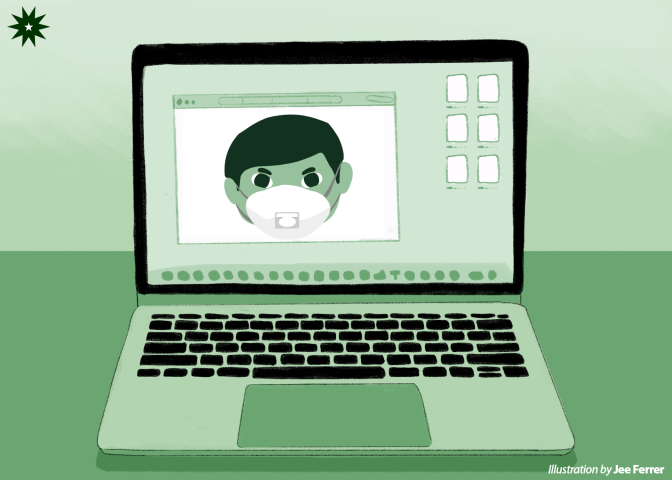The global coronavirus disease (COVID-19) pandemic has shown as of yet little signs of slowing down—infecting over 200,000 recorded cases and claiming almost 9,000 lives worldwide as of press time. As scientists and governments alike race against the clock to understand the disease and devise effective solutions, some nations have been faring better than others in containing its spread.
With this, medical experts from universities and hospitals across Asia shared insights on the COVID-19 situation in their respective localities through an online conference yesterday, March 18, discussing the diagnostic protocols, treatment options, and challenges in addressing the outbreak.
On protocols
The teleconference served as an avenue for detailing and comparing various approaches in responding to and managing COVID-19, both at the hospital level and on a national scale. A commonality among the presentations was the directive to not implement generalized screening; instead, the reverse transcription-polymerase chain reaction tests specific for diagnosing COVID-19 would only be performed if the individual was showing symptoms or had history of contact, in accordance with the clinic or country’s respective guidelines.
Dr. Nobuyuki Shimono, an Infectious Disease specialist at Kyushu University Hospital’s Center for the Study of Global Infection, relayed that specialized outpatient clinics had been established for examining suspected COVID-19 cases in Japan. Diagnostic testing is conducted on individuals with symptoms of fever for four or more days and pneumonia, as well as those who have been in close contact with a known case.
The National Taiwan University Hospital (NTUH), meanwhile, has implemented a modified biological triage, Dr. Chien-Hao Lin of the Emergency Medicine Department explained, in order to assess and classify suspected COVID-19 cases as either medium or high-risk patients. The triage or screening protocol utilizes a structured questionnaire to determine the individual’s symptoms; travel history and residence; occupation; possible contact with known cases; and clusters—a group of cases that can be linked to one another in terms of geographic proximity.
Medium-risk patients are directed to a special clinic outside the main hospital, whereas high-risk individuals proceed to an isolation area also separate from the main hospital building. “There is a waiting area outside for the high-risk patients,” Lin stated, expounding that these separate locations were intended toward minimizing contact with the COVID-19 patients and avoiding transmission to hospital staff and other patients.

Long road ahead
Nearly three months into the outbreak, nations and their healthcare services have already encountered and are projecting several points of concern as the number of COVID-19 cases grows exponentially.
Clinical teams at Singapore’s Ng Teng Fong Hospital have been segregated, no longer attending to duties in big groups. “We’re now functioning as team-less; each specialist is assigned [only] one junior staff…to ensure [that operations can continue] in case someone gets hit by the virus,” elaborated Deputy Chief Medical Informatics Officer Dr. Han Boon Oh, pointing out the shift in hospital work culture. “Before, when health workers [would] fall sick, we still [come] to work. But now, if you show symptoms of fever, immediately [you are] given five days to stay home and [self-]isolate.”
For Japan, however, Shimono noted that the number of healthcare practitioners is “not big”, and specialized doctors—particularly in the fields of Infectious Disease, Pulmonology, and Critical Care—may not always be present in each hospital.
“Many [medical] institutions are not available for highly specialized treatment…[COVID-19] patients with severe conditions need to be sent to bigger hospitals,” he added, explaining that some clinics do not have the necessary structures like ventilators and negative pressure rooms to properly isolate and care for the afflicted.
NTUH’s external COVID-19 infrastructures were also established “to increase capacity”, expanding the service area in anticipation of the hospital eventually encountering logistical limitations and becoming overloaded.
“If the pandemic continues, staff health will be an issue…It’s really a tough job to attend to a single patient,” Lin stressed, as he recognized the exhaustive toll of combating the disease on various facets of the healthcare system—from supplies and space to personnel and policy decisions.
With his country’s thus-far promising zero death toll in 313 COVID-19 cases, Oh observed, “What Singapore has done is early detection and containment in the early period of the outbreak [to avoid mortality].” Further, all the speakers reiterated the significance of hygiene and safety measures, citing hand washing, cough etiquette, and—for medical personnel—wearing of personal protective equipment.
Communication and coordination
“[On] every single newspaper, the [front] cover is actually on how to protect yourself, how to practice social responsibility and [personal] hygiene. [The reminders are also] regularly broadcasted [through] television news channels and social media platforms,” Oh highlighted, emphasizing the active utilization of mass media and Information Technology (IT). “Even those not IT-savvy have come to accept IT as a way to receive news about COVID-19.”
Singapore’s Ministry of Health has been coursing daily updates through the messaging platform WhatsApp, including details on links between new cases and previous cases and clusters. Oh also recounted how the government used social media to quell panic-buying—which was prompted by lockdown circumstances in other countries—by reassuring the citizenry that three months’ worth of stockpiled goods would be enough for everyone. “The medical community needs to find better ways to communicate with the public and with each other especially in the era of social media,” he further claimed.
Easy access to information has similarly been facilitated in NTUH, with the website and database being updated daily and the latest news also delivered through push messages or notifications.
However, COVID-19 remains an “unknown disease” with many variables and aspects left unanswered, as Lin asserted, “We still do not know what is the real mortality [rate], morbidity, and transmission routes—epidemiologic data from each country was different.”
